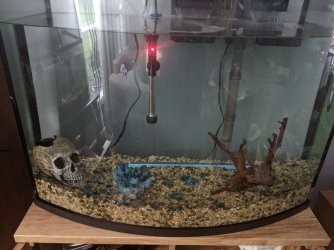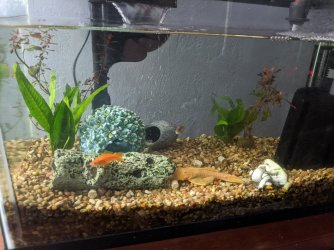Randomflutterby
New Member
Hi all, I have a mystery that I can't figure out with Google.
My tap water is pretty soft, (3 general harness), as is a new tank I just filled. The weird part:
I have a 10 gallon tank I took over a few weeks ago from a friend. The gh has been 8ish the eye entire time I've had it.. Water changes and all. Why is the water in there so hard?
Thanks
My tap water is pretty soft, (3 general harness), as is a new tank I just filled. The weird part:
I have a 10 gallon tank I took over a few weeks ago from a friend. The gh has been 8ish the eye entire time I've had it.. Water changes and all. Why is the water in there so hard?
Thanks



